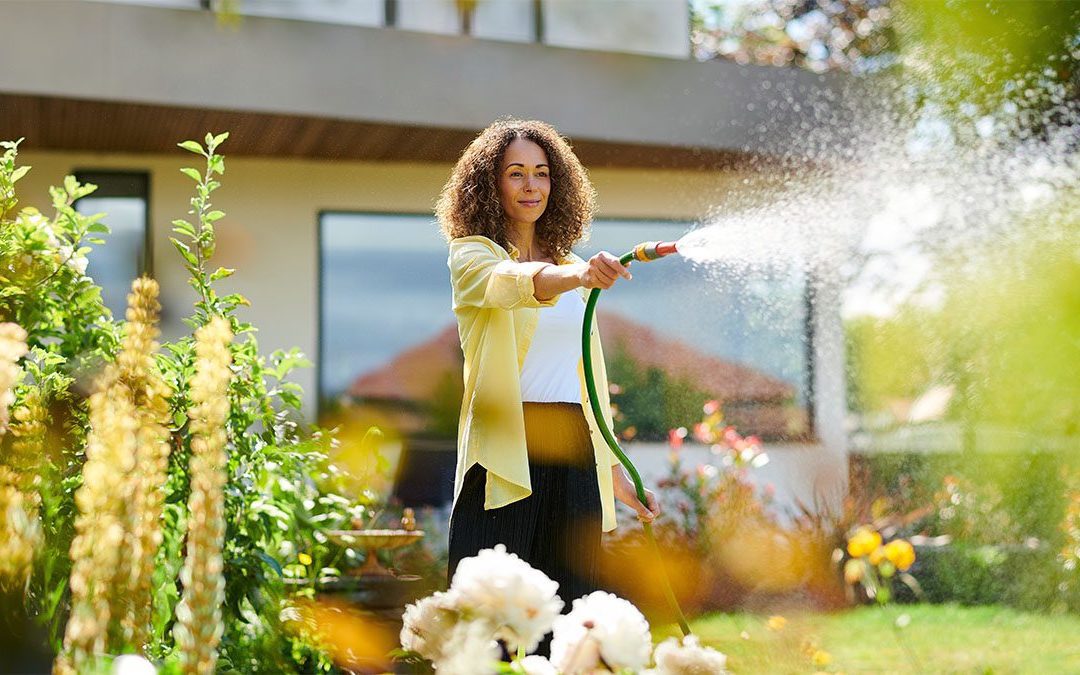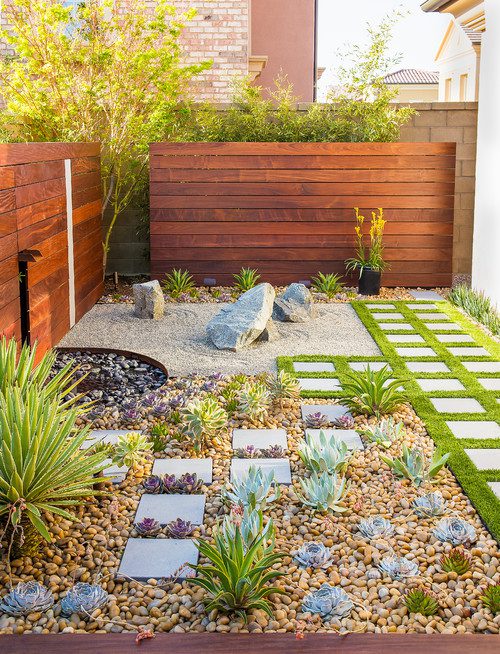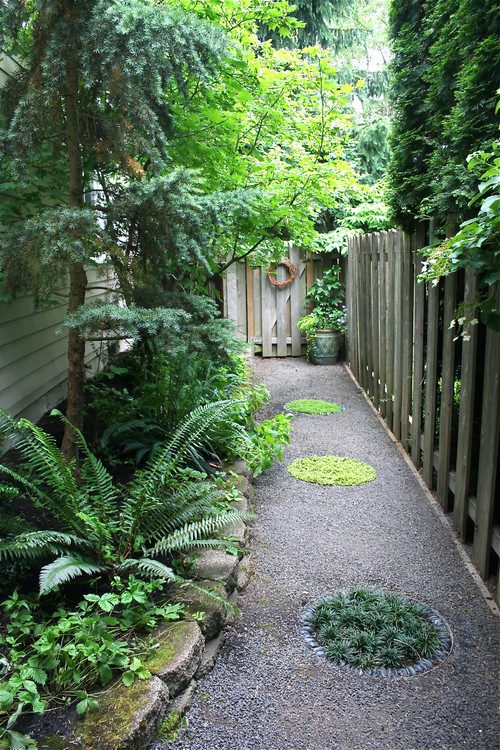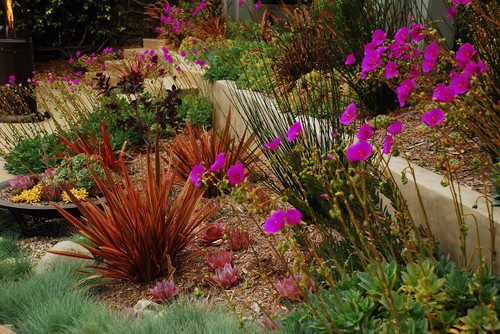Ways To Save Water in Your Garden: MABA Massachusetts RealEstate HomeOwener
Across the country, drought conditions continue to affect homeowners. According to Drought.gov, 94.3 million people are currently affected by drought, up five point five percent from last month. Most of us do our part to conserve water. However, up to 50% of the water used for garden and/or lawn irrigation is wasted due to evaporation, wind, or overwatering. So if watering your yard is part of your weekly (or daily) chores, listen up.
vIt’s possible to maintain a beautiful, nourished garden while also adhering to an efficient watering routine. Below, we have a number of tips and insights from gardening experts on how to bring sustainability to your yard. And these changes are not just eco-friendly they’ll also help to reduce your water bill. Win!
1. Use plants that need less water
If you want to cut back on watering, seek out drought-resistant plants.
“Plant flowers that need less water,” says Craig Wilson, director and co-founder of Gardeners Dream. “Plants such as the Californian poppy, sunflower, and marigold are all good choices. For a climbing variety, consider passionflower or jasmine. The most drought-resistant tree is the acacia.” The New York Botanical Garden’s online library is a great place to start researching and gathering information. It includes a comprehensive list of drought-resistant perennials, trees, shrubs, and annuals, with links to additional resources.
2. Plant vegetables close together
If you’re focusing on vegetables in lieu of flowers, consider their placement when they go in the soil. “If you have a vegetable garden, plant your crops as close together as possible, so that they will shade each other,” says Melody Estes, a landscape design gardening supervisor based in Maine and a consultant at The Project Girl. “This will help conserve water.”
3. Pile on the mulch

Getty Images
Deploying a healthy sprinkling of mulch is one of the best ways you can grow healthy plants and conserve water. Mulch adds a layer of protection that locks in moisture, lowers the rate of natural water evaporation in the soil, reduces erosion, and controls weeds. “In my backyard and vegetable garden, I use good-quality compost and mulch to keep the moisture in the soil, reducing the need for constant watering—especially in the hotter summer months,” says environmental scientist and avid gardener Amber Rogers, founder of MyChickenGuide.com. Adding organic mulch also provides plants and trees with essential nutrients, and “mulching can reduce evaporation from soil up to seventy percent,” she explains.
4. Collect rainwater
When the sky opens up, be prepared. You’ll be able to use that rainwater during the dry days ahead. “You can collect rainwater by using a rain barrel or cistern,” says Jill Taylor, a homesteader in Oklahoma. “Rain barrels are placed under a downspout to collect water as it runs off the roof. Cisterns are larger tanks that can collect and store a larger amount of water. Both rain barrels and cisterns can be used to water plants and gardens. Not only is rainwater free, but it’s also less likely to contain chemicals like chlorine and fluoride that can harm plants.”
5. Water early in the day
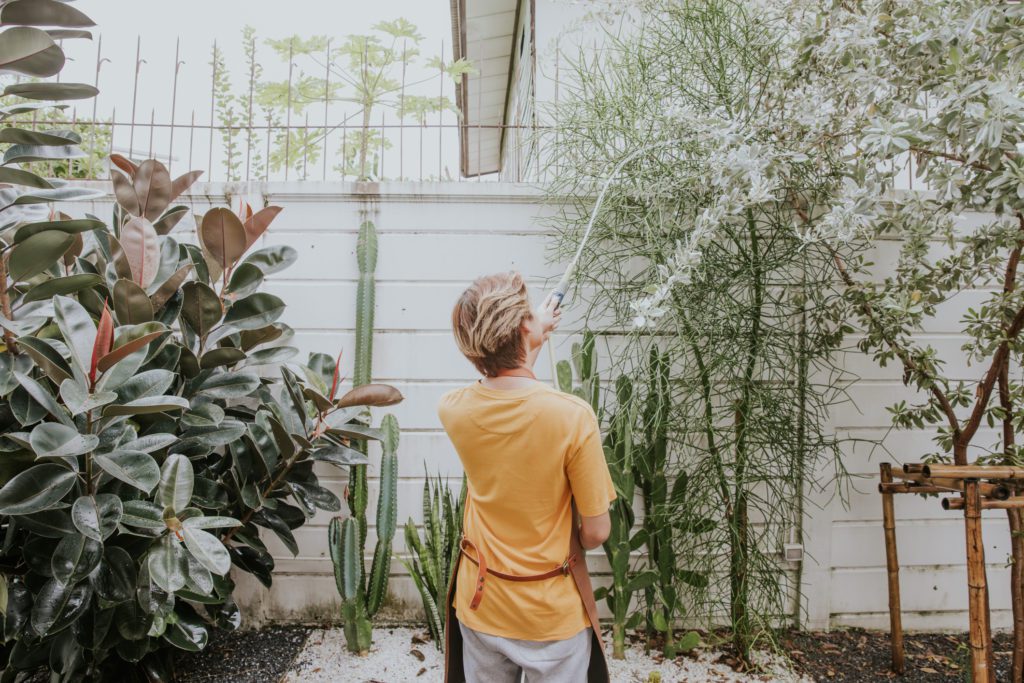
Getty Images
Many novice gardeners don’t give a second thought to the time they water. But you should try to water early in the day, when it’s cooler. “If you water early in the day, evaporation is less likely to occur,” Taylor advises. Early is defined as between 5 and 9 a.m. “This will help ensure that more water reaches the roots of plants, where it’s needed,” Taylor explains. “In addition, watering when it’s cooler will reduce evaporation and help the plants absorb more water.”
6. Use greywater
Greywater is what it sounds like water that has been used, and isn’t something you’d want to drink. “You can reuse greywater from baths and showers,” says Wilson. “You can also purchase greywater diverters for your kitchen sink or washing machine. However, if you do this, choose your cleaning products carefully as dishwasher salt, certain disinfectants, and products containing bleach are all harmful to plants.”
7. Install a rain sensor
Homeowners with sprinklers on a timer might forget to turn off the system when it rains. But this costly and wasteful mistake can be avoided with the help of a gadget. “I installed a rain sensor on my reticulation system, so it will never turn on when it’s raining,” says Rogers. “This can save around thirty five percent of usual reticulation water usage. I also regularly check that the reticulation sprinklers are hitting their targets and not the pavement or areas that don’t need watering.”
8. Replace your lawn with native species
Americans are increasingly ready to say goodbye to their thirsty grass, with movements like No Mow May. Lawns comprise about forty million acres, or two percent, of all U.S. land, gobbling up water, time, and money. “I have replaced all of my water-thirsty front lawn with native mulch and water-efficient native plants,” Rogers says. She recommends planting native plants that will attract pollinators. Comparative studies show that switching to bird- and bee-friendly native plants can save more than sixty thousand gallons of water per year.
9. Switch to drip irrigation
Drip irrigation is up to ninety percent efficient at targeting plants, whereas sprinklers top out at being seventy five percent efficient. In addition to being more eco-friendly and economical, drip irrigation systems reduce weed growth, increase effectiveness on uneven ground, reduce leaching of water and nutrients below the root zone, and prevent disease by minimizing water contact with leaves, stems, and the plant’s fruit. “Drip irrigation is a highly efficient way to water plants,” Taylor says. “It delivers water directly to the roots of plants, where it’s needed most, with little to no water lost to evaporation. Drip irrigation can be used with both native and non-native plants.”
10. Group plants into watering zones
A water-efficient landscape starts with how it’s designed. One of the best ways to save water, time, and money is to group like with like in terms of water usage. “If you group plants together that have similar watering needs, it will be easier to water them without wasting water on plants that don’t need it,” says Shaun Martin, CEO of Denver Home Buyer in Denver. “For example, you might group all of your cacti and succulents together in one area, since they don’t need much water, and put all of your leafy greens in another area, since they need more water.”
The post 10 Best Ways To Save Water in Your Garden appeared first on Real Estate News & Insights | realtor.com®.
First Time Home Buying in Massachusetts
 MABA Buyer Agents help first time home buyers reduce the stress and frustration normally associated with buying a home or condo – especially for first time home buyers.
MABA Buyer Agents help first time home buyers reduce the stress and frustration normally associated with buying a home or condo – especially for first time home buyers.
As a first time homebuyer in Massachusetts, you can turn to our non-profit organization to help you understand and navigate the complexities of the entire Massachusetts real estate transaction, from mortgage pre-approval until you are handed the keys to your new home or condominium. Each of our member buyer's brokers and agents works only for their buyer-clients and never for the seller of the home or condo that their buyers want to buy.
MABA Buyer Agents will take the time to learn about you and your real estate goals, help you understand your options, including first time home buyer programs, properties and/or condominium associations, estimate real property values and put together a negotiating strategy to help you increase the odds of getting your offer accepted in our competitive Massachusetts real estate market. After advocating to get your offer accepted, your MABA buyer's agent will be there for you at your home inspection and help you protect your deposit through the inspection, purchase & sale and financing contingency periods.
You can buy your first home or condo with confidence knowing that your MABA buyer agent is committed to saving you time and money and helping you make your best home buying decision.
Article From: "Kathleen Willcox" Read full article
Get Started with MABA
For no extra cost, let a MABA buyer agent protect your interests

